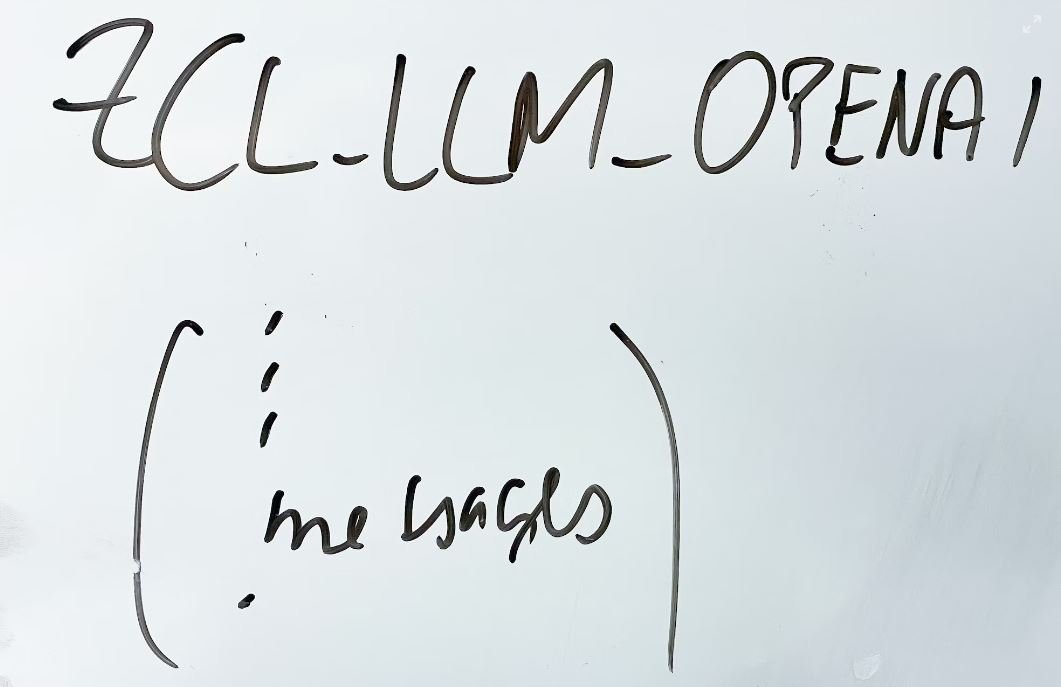How Songs Are Composed
Music is a universal language that has the power to evoke emotions and connect people. Whether it’s a catchy pop tune or a haunting melody, every song is crafted with care and creativity. In this article, we will explore the process of how songs are composed, from the initial idea to the final product.
Key Takeaways:
- Song composition involves a series of steps that musicians follow to bring their ideas to life.
- The main components of a song are lyrics, melody, harmony, and rhythm.
- Collaboration and experimentation play a crucial role in the composition process.
- Technology has revolutionized song composition, giving artists access to a wide array of tools and resources.
The Songwriting Process
Every songwriter has their own unique approach to the composition process. Some start with lyrics, while others begin with a melody or a chord progression. The first step is to find inspiration, whether it’s from personal experiences, emotions, or external sources. Once an idea is sparked, the songwriter can start building the song structure, adding verses, choruses, bridges, and other sections.
Every songwriter has their own way of capturing that initial spark of creativity, be it through a voice memo, a scribbled note, or a melody that’s stuck in their head.
Components of a Song
A song typically consists of four main components: lyrics, melody, harmony, and rhythm. Lyrics convey the song’s message and can be inspired by personal experiences, storytelling, or abstract concepts. The melody is the memorable part of the song that listeners hum or sing along to. Harmony refers to the chords and chord progressions that provide a rich backdrop to the melody. Rhythm establishes the pulse and groove of the song, with different instruments and percussions adding layers of texture and energy.
When these elements come together harmoniously, they create a powerful and emotive musical journey for the listeners.
Song Collaboration
Collaboration is an essential aspect of the song composition process. Many songwriters work with others to bring their ideas to life. This collaboration can involve co-writers, producers, and musicians who contribute their expertise and ideas. Working with others allows for different perspectives, fresh ideas, and diverse skills. It often leads to the development of unique and innovative songs.
Collaborating with others not only enhances the creative process but also fosters a sense of collective accomplishment and shared musical vision.
Technology and Song Composition
The advancement of technology has greatly impacted song composition. With digital audio workstations, software plugins, and virtual instruments, musicians now have access to an extensive range of tools and resources. These technological advancements allow for recording, editing, and manipulating audio with ease. Additionally, the internet provides a platform for sharing and collaborating with musicians from across the globe.
Technology has democratized the song composition process, making it more accessible and enabling artists to explore new sonic landscapes.
Tables:
Below are three tables showcasing interesting information and data points related to song composition:
| Table 1: Top Songwriting Techniques |
|---|
| 1. Verse-Chorus Structure |
| 2. Emotionally Charged Lyrics |
| 3. Catchy Hooks |
| 4. Bridge or Middle Eight |
| 5. Unique Song Form |
| Table 2: Popular Key Signatures | Table 3: Common Time Signatures |
|---|---|
| 1. C Major | 1. 4/4 (Common Time) |
| 2. G Major | 2. 3/4 (Waltz Time) |
| 3. D Major | 3. 6/8 (Double Time) |
| 4. A Major | 4. 2/4 (Cut Time) |
| 5. E Major | 5. 5/4 (Odd Time) |
In Conclusion
The process of composing a song involves a series of creative and technical steps that bring together lyrics, melody, harmony, and rhythm. Collaboration and the use of technology have revolutionized the way songs are composed, allowing for greater innovation and accessibility. Songwriters continue to push the boundaries of creativity, creating timeless music that resonates with audiences around the world.

Common Misconceptions
Songs are created effortlessly
One common misconception people have about song composition is that it is an effortless process for musicians. In reality, composing a song requires a significant amount of time and effort.
- Composing a song involves brainstorming and experimenting with different melodies, chord progressions, and lyrics.
- Musicians often spend hours refining and perfecting their songs, revisiting and revising sections multiple times.
- The process of composing a song requires creativity, skill, and an understanding of music theory to create a coherent and well-structured piece.
Songs are always written in one sitting
Another misconception is that songs are always written in one sitting, where inspiration strikes and everything falls into place effortlessly. In reality, the songwriting process can be a lengthy and iterative one.
- Sometimes, songwriters may start with a basic idea or fragment of a song and gradually build upon it over days, weeks, or even months.
- Writing a song often involves going back and forth, making adjustments, and experimenting with different ideas until a satisfactory result is achieved.
- Songs may undergo multiple versions and iterations before the songwriter feels they have a finished product.
Only talented musicians can compose songs
There is a misconception that only highly talented musicians have the ability to compose songs. While talent can certainly play a role in the songwriting process, it is not the sole determining factor.
- Song composition is a skill that can be learned and developed over time with practice and dedication.
- Many successful songwriters started with little to no formal training and learned through trial and error.
- While talent can help in the creative process, it is the willingness to learn and explore that ultimately leads to successful song composition.
Originality is essential in song composition
Some people believe that every song must be completely original to be successful. However, this is not always the case.
- Songwriters often draw inspiration from existing songs, genres, or musical styles, putting their unique twist on familiar elements.
- A successful song can resonate with listeners by incorporating familiar elements while bringing a fresh perspective or adding unique elements.
- Originality in song composition comes from the way familiar elements are combined and presented, rather than striving for complete novelty.
Lyrics are the most important part of a song
While lyrics certainly play a significant role in many songs, it is a misconception that they are the most important component.
- A well-composed song consists of various elements working together harmoniously, including melody, rhythm, harmony, instrumentation, and production quality.
- Instrumental pieces, such as classical compositions or electronic music, do not rely on lyrics yet can still be highly impactful and emotionally engaging.
- Lyrics can enhance a song’s meaning and narrative, but they are just one piece of the puzzle in creating a compelling musical composition.

Introduction
Song composition is a fascinating process that involves multiple elements coming together to create a harmonious piece of music. From the lyrics to the melody, every aspect matters in crafting a memorable song. In this article, we explore various aspects of how songs are composed by presenting ten interesting tables that provide insights into this creative endeavor.
The Anatomy of a Song
The table below presents the different components that contribute to the structure of a song, including the verse, chorus, bridge, and pre-chorus. Each section serves a distinct purpose and plays a vital role in conveying the message of the song.
| Component | Description |
|---|---|
| Verse | The main storytelling section of the song. |
| Chorus | The catchy, repetitive part that serves as the emotional core. |
| Bridge | An interlude that provides contrast and progression. |
| Pre-Chorus | Builds anticipation leading into the chorus. |
The Power of Rhythm
Rhythm is a fundamental aspect of music that adds groove, emotion, and drive to a song. The table demonstrates the average beats per minute (BPM) of various genres and highlights their distinctive rhythmic characteristics.
| Genre | Average BPM | Rhythmic Characteristics |
|---|---|---|
| Rock | 120 | Strong presence of steady quarter-note beats. |
| Pop | 100 | Catchy and upbeat rhythms that encourage dancing. |
| Hip-hop | 90 | Emphasis on syncopation and intricate drum patterns. |
| Electronic | 130 | Driving beats and repetitive patterns that create a hypnotic effect. |
Songwriting Collaborations
Many iconic songs are the result of collaborative efforts between multiple songwriters. The table showcases some famous partnerships and the number of songs they co-wrote together, highlighting the power of teamwork in song creation.
| Collaboration Duo | Number of Co-Written Songs |
|---|---|
| John Lennon & Paul McCartney | 180+ |
| Mick Jagger & Keith Richards | 200+ |
| Rodgers & Hammerstein | 34 |
| Burt Bacharach & Hal David | 70+ |
Multi-Instrumentalists in Songwriting
Some songwriters possess skills in playing multiple instruments, allowing them to create songs with diverse musical textures. The table highlights notable multi-instrumentalist songwriters and the instruments they play.
| Songwriter | Instruments Played |
|---|---|
| Stevie Wonder | Piano, harmonica, drums, bass, and more. |
| Prince | Guitar, piano, drums, bass, and more. |
| Jonny Greenwood | Guitar, piano, viola, synthesizer, and more. |
| Grimes | Guitar, keyboards, drums, violin, and more. |
Influence of Key Signatures
The choice of key signature can greatly impact the mood and feel of a song. The table below showcases four key signatures commonly used in various genres and describes the emotions or atmospheres typically associated with them.
| Key Signature | Mood/Atmosphere |
|---|---|
| C Major | Bright, happy, and lively. |
| E Minor | Sad, introspective, and melancholic. |
| G Major | Warm, cheerful, and uplifting. |
| A Minor | Mysterious, contemplative, and dramatic. |
The Impact of Song Length
Song length varies across different genres and can influence listener engagement. This table presents the average duration of songs in various genres, showcasing their propensity for concise or lengthy compositions.
| Genre | Average Song Length (minutes) |
|---|---|
| Pop | 3.5 |
| Rock | 4.5 |
| Classical | 10.5 |
| Progressive Rock | 9 |
Lyric Themes in Songwriting
Song lyrics tackle a wide range of themes, and this table explores popular lyrical subjects across different decades, showcasing how societal influences can shape songwriting.
| Decade | Popular Lyric Themes |
|---|---|
| 1960s | Peace, love, and social change. |
| 1980s | Materialism, personal struggle, and self-expression. |
| 2000s | Technology, relationships, and vulnerability. |
| 2020s | Identity, mental health, and activism. |
Global Influence of Music
Music transcends borders, and this table showcases some of the most globally successful songs by presenting the top-selling hit from four different continents.
| Continent | Top-Selling Hit |
|---|---|
| North America | “Thriller” by Michael Jackson |
| Europe | “Bohemian Rhapsody” by Queen |
| South America | “Despacito” by Luis Fonsi & Daddy Yankee |
| Asia | “Gangnam Style” by Psy |
The Role of Technology
Advancements in technology have revolutionized the music industry. The table below presents notable technological innovations and their impact on song creation and production.
| Innovation | Impact on Song Creation |
|---|---|
| Auto-Tune | Allows pitch correction and creative vocal effects. |
| MIDI | Enables digital composition, arrangement, and flexible instrumentation. |
| Digital Audio Workstations (DAWs) | Facilitates recording, editing, and mixing of music. |
| Sampling | Enables the use of existing music and sounds in new compositions. |
Conclusion
Understanding the composition process of songs provides valuable insight into the intricate artistry behind the music we love. From the structure to the rhythm, lyrics, and technological innovations, every aspect contributes to crafting an unforgettable song. Exploring these elements enhances our appreciation for the creativity and skill required to compose captivating music.
Frequently Asked Questions
How Songs Are Composed
How do songwriters come up with melodies?
Songwriters often come up with melodies by experimenting with different combinations of notes. They may play around with scales, chord progressions, or hum melodies to themselves until they find something they like.
What is the role of lyrics in song composition?
Lyrics play a crucial role in song composition as they convey the message or story of the song. They provide emotional depth and help connect with listeners on a personal level.
Can anyone become a songwriter?
Yes, anyone can become a songwriter. While natural talent and musical sensibility certainly help, the craft of songwriting can be learned and developed over time through practice and dedication.
What are some common song structures?
Common song structures include verse-chorus, verse-chorus-bridge, and AABA (verse-verse-bridge-verse). These structures provide a framework for organizing different sections of the song and creating a cohesive musical experience.
How do songwriters collaborate with other musicians or lyricists?
Songwriters often collaborate with other musicians or lyricists by sharing their creative ideas and working together to bring those ideas to life. This collaboration can involve brainstorming, sharing feedback, and combining different strengths and perspectives to create a unified piece of music.
What equipment is commonly used by songwriters?
Common equipment used by songwriters includes instruments such as guitars, keyboards, and drums. Additionally, recording and production tools like digital audio workstations (DAWs), microphones, and audio interfaces are often utilized to capture and refine the songwriting process.
Do songwriters need to have formal music training?
No, formal music training is not a requirement for being a songwriter. While training can provide a strong foundation and enhance musical skills, many successful songwriters are self-taught and have developed their abilities through practice and experimentation.
How long does it take to compose a song?
The time it takes to compose a song can vary greatly depending on the songwriter and the complexity of the composition. Some songs may be completed in a matter of hours, while others may take weeks or even months to reach a final version.
What are some common sources of inspiration for songwriters?
Songwriters draw inspiration from various sources including personal experiences, relationships, emotions, societal issues, literature, art, and nature. Anything that resonates with the songwriter can serve as a source of inspiration for their music.
How can songwriters protect their original compositions?
Songwriters can protect their original compositions by copyrighting their work. This entails registering the song with the appropriate copyright office, which grants them legal protection and the right to control the use and distribution of their music.




